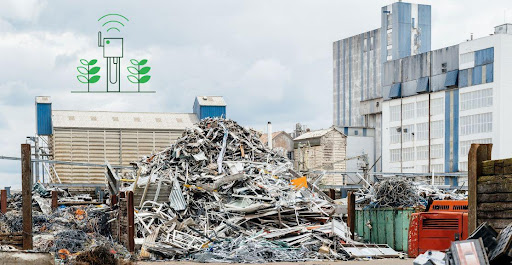
C&D waste refers to waste materials generated from construction, renovation, and demolition activities, including concrete, wood, metal, asphalt, brick, and plastics. These waste materials are turning into something of value through construction and demolition waste recycling technology.
Why is construction and demolition waste recycling important?
People are now attaching great importance to construction and demolition waste recycling. Here are four reasons.
Environmental benefits: Recycling C&D waste helps to divert these materials from landfills, which can have harmful effects on the environment. It also reduces greenhouse gas emissions and conserves natural resources.
Cost savings: Recycling C&D waste can be more cost-effective than traditional waste disposal methods, such as sending waste to landfills. Recycled materials can be used in new construction projects, reducing the need for virgin materials.
Economic benefits: Construction and demolition waste comprises multiple economically valuable materials such as reusable aggregates, bitumen, brick, cardboard, concrete, metals, mineral wool, and wood, many of which can be sold directly or used in new products, construction materials, or energy production.
Regulatory compliance: Many countries and regions have regulations in place that require the recycling of C&D waste. Recycling C&D waste can help construction companies and contractors to comply with these regulations and avoid fines and penalties.
How is C&D waste recycled?
The process of C&D waste recycling typically involves the following steps:
Collection: C&D waste is collected from construction and demolition sites and transported to recycling facilities. With the help of mobile recycling equipment, the waste can be recycled directly at the demolition site, saving transportation costs.
Sorting: Sorting waste into different categories based on material type. This can be done manually or by using sorting equipment.
Processing: The sorted waste is processed by various methods such as crushing, grinding, and chopping to make recycled materials.
Manufacturing: Recycled materials are used to make new products such as concrete blocks, bricks, and road base materials.
Reuse: Recycled materials are reused in new construction projects, landscaping, and other applications.
What is a mobile recycling equipment for C&D waste?
Mobile recycling equipment for construction and demolition (C&D) waste refers to portable machinery and equipment that can be easily transported and set up on a construction site to recycle waste materials.
With mobile recycling equipment, you can save on transport costs and go where the work is. Particularly in cities, urban environments, and other populated areas, mobile recycling equipment can be a much more economical option.
Some common types of mobile recycling equipment for C&D waste include:
Mobile crushers
The machine is equipped with a powerful jaw or impact crusher that can crush C&D waste materials such as concrete, asphalt, and bricks into smaller sizes for reuse.
The crushed materials can then be reused for various construction applications such as road bases, fill material, or aggregates in new concrete or asphalt.
Mobile screening plant
Mobile screening plants help reduce the amount of waste sent to landfill by identifying and separating recyclable or reused materials on site. And they allow operators to quickly and easily sort and separate recyclable materials by size or type, increasing the efficiency of the recycling process. Finally, mobile screening plants separate different sizes of recycled aggregate material, such as sand, gravel, and crushed stone, into different categories for use in various construction applications.
Mobile shredders
Mobile shredders are suitable for shredding and reducing the size of softer materials such as wood, insulation, plastics, and general mixed waste.
Portable conveyors
The portable conveyor can be used to transport a variety of materials, including construction debris, waste materials, and recyclables such as concrete, bricks, and metals. The conveyor belt is designed to handle heavy loads and is typically made from durable materials such as rubber or steel. The conveyor can be adjusted to different heights and angles to suit the specific needs of the recycling operation.
Conclusion
Due to its mobility and compactness, mobile recycling equipment has become a sharp tool for recycling construction and demolition garbage in urban areas. It helps to reduce landfill waste, improve material quality, increase efficiency, and provide environmental benefits, all of which are important for promoting sustainable waste management practices.
Interesting Related Article: “Four Benefits of Recycling for Businesses“

